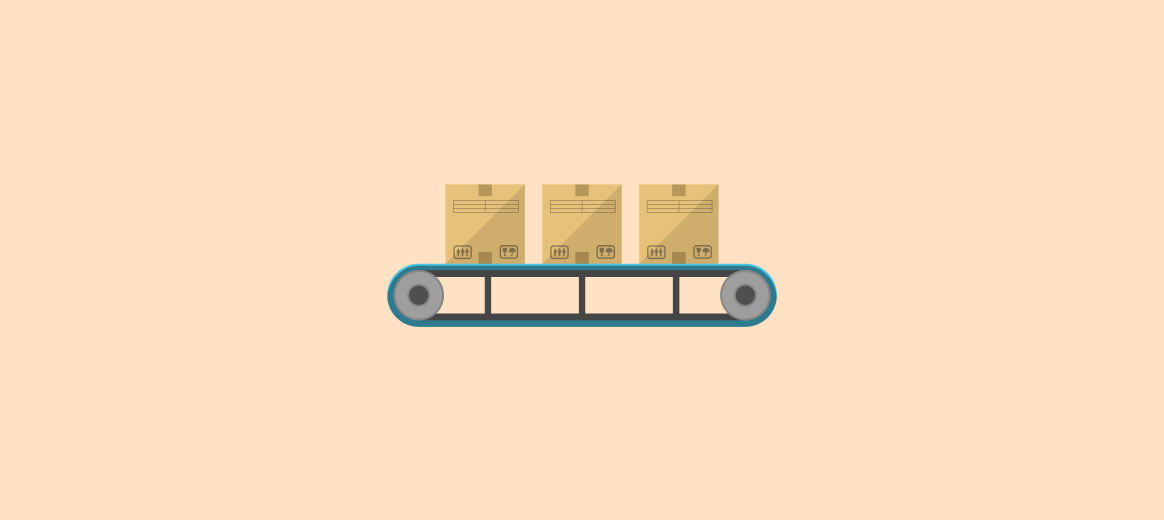As we progress through 2025, manufacturing companies are encountering an array of challenges that are reshaping the landscape of accounts payable processes within the manufacturing industry. From grappling with supply chain disruptions to navigating the complexities of economic uncertainty, each hurdle presents unique demands on operational efficiency and financial management.
With the increasing necessity for automation, manufacturing leaders are discovering the transformative power of smart technologies, like Robotics, Artificial Intelligence (AI), and Internet of Things (IoT), in maintaining compliance and overcoming regulatory burdens. Additionally, the pressing issues of labor shortages and a widening skills gap necessitate innovative solutions to sustain productivity and growth.
In this blog, we will explore the top five accounts payable challenges for the manufacturing sector in 2025 and examine how strategic implementation of automation can equip manufacturers with the tools needed to streamline operations and stay competitive.
1. Mitigating Supply Chain Disruptions
In 2025, manufacturing supply chains are coming under threat from global disruptions, material shortages, and supplier dependencies. Global events such as the COVID-19 pandemic and geopolitical tensions have exposed supply chain vulnerabilities, leading to material shortages, production delays, and cost increases, as highlighted in a recent report by Deloitte and Manufacturers Alliance.
To combat these challenges, manufacturers are increasingly turning to automation—through IoT, AI, and vendor collaboration tools—to enhance their supply chain processes and bolster resilience.
But how are automation solutions helping manufacturers to build supply chain resilience through their daily operations? Here are three ways in which this is being achieved:
- Real-Time Visibility and Tracking: Is essential for supply chains. Through IoT and AI, automation boosts transparency, predictive analytics, and coordination, facilitating proactive maintenance and adaptive inventory control. These technologies convert supply chains into agile systems, crucial for efficient challenge resolution.
- Optimized Inventory Tracking: Automation enhances supply chain resilience by balancing supply and demand, reducing costs, and adjusting to disruptions. Essential technologies include automated reorder systems, AI demand forecasting, IoT tracking, and warehouse automation. These tools ensure efficient operations, cost savings, and improved customer satisfaction.
- Enhanced Vendor Collaboration: Is crucial for supply chain resilience. Automation simplifies communication, centralizes access to information, and offers AI-driven insights. It facilitates vendor portals, collaborative forecasting, and automated contract management, optimizing procurement processes for dependable supply networks and ongoing operational success.
Manufacturers are increasingly leveraging automation technologies, such as IoT and AI, to address challenges like global disruptions and material shortages in their supply chains. Automation provides real-time visibility, optimized inventory tracking, and enhanced vendor collaboration, transforming supply chains into agile systems capable of maintaining operational efficiency and resilience.
Learn more about how manufacturers are building supply chain resilience through automation – How Automation is Reshaping Supply Chain Resilience for Manufacturers in 2025.
2. The Necessity of Automation for Innovation
The manufacturing industry is rapidly transforming, with manufacturing leaders increasingly adopting advanced automation technologies to secure their operations and boost competitiveness. In fact, Deloitte reports that 98% of manufacturers have already started their digital transformation journey. This technological drive has ushered in an era of “Smart Manufacturing.”
As a result, manufacturers are discovering new ways to streamline processes by eliminating inefficiencies and enhancing product quality—leading to increased productivity and reduced costs. Automation is facilitating the elimination of inefficiencies in the following ways:
- Consistent Precision: Ensures repetitive tasks are performed with precision, reducing variances and improving consistency.
- Continuous Operations: Enables operations without breaks, boosting output and cutting downtime.
- Dynamic Scheduling: Allows agile scheduling, enabling quick adaptation to demand changes and optimized resource use.
- Early Defect Detection: Utilizes checks and sensors to identify defects early, reducing waste and rework.
Furthermore, automation is enhancing product quality through:
- Reduced Human error: Decreased human errors, leading to consistent quality and fewer defects.
- Quality Control: Systems that uphold quality standards, ensuring products meet criteria.
- Predictive Analytics: Leveraging data, automation foresees issues, allowing proactive adjustments.
- Real-Time Data: IoT which enables data collection and monitoring, driving continuous quality improvement.
- Continuous Improvement: fostering process refinement through feedback and data analysis.
Automation in manufacturing offers substantial efficiency and innovation opportunities but faces barriers like cost and scalability. Businesses can address high implementation costs through phased integration, government incentives, and collaboration with technology providers.
Scalable solutions, including modular robotics and cloud platforms, allow for flexible growth and risk mitigation. Automation also supports continuous improvement through real-time analytics and data-driven decisions, essential for adapting to market demands and sustaining operational excellence.
You can read more about this in our blog – The Future of Manufacturing: How Automation is Driving Technological Innovation.
3. Increasing Complexity of Regulatory Compliance
Automation has emerged as a crucial tool for manufacturers to tackle complex regulatory challenges, such as intricate environmental standards and evolving trade policies. With 73% of Chief Compliance Officers (CCOs) expecting regulatory expectations to rise going forward, according to KPMG, the manufacturing industry requires a solution to streamline compliance processes and empower manufacturers to focus on growth without the looming threat of costly penalties.
Automation in manufacturing, via automated accounts payable (AP) systems, enhances compliance by offering the following capabilities:
- Real-Time Monitoring: These systems validate tax codes, generate audit-ready reports, and integrate seamlessly with compliance protocols. Automation also enhances data security and provides real-time error detection and reporting, vital for minimizing risks and ensuring operational integrity.
- Reducing Human Error: Is crucial in maintaining compliance, as manual processes can lead to costly mistakes. Automated AP systems standardize processes, improve data entry accuracy, and provide comprehensive audit trails, reducing errors and ensuring regulatory adherence.
- Ensuring Adherence to Evolving Regulations: For global compliance, automated AP systems manage the complexities of operating across various regulatory environments. They achieve this in the following ways:
- Ensuring the uniform application of standards
- Automating currency conversion
- Facilitating cross-border transactions
- Centralizing regulatory updates
Additionally, these systems use predictive analytics for proactive compliance, enabling manufacturers to anticipate and adapt to regulatory changes efficiently.
In summary, automating accounts payable processes allows manufacturers to achieve robust compliance, operational efficiency, and strategic growth by minimizing risks, enhancing accuracy, and enabling proactive management of regulatory changes.
You can read more about this in our blog – Automation and Compliance: Simplifying Regulatory Challenges for Manufacturers.
4. Navigating Economic Uncertainty
According to a recent report by KPMG, 74% of Manufacturing CEO’s surveyed, named economic uncertainty as one of their top challenges heading into 2025. Facing economic challenges like rising raw material costs, inflation, and demand uncertainties, manufacturers are adopting automation to bolster resilience and cost efficiency.
Automation is enabling manufacturers to increase efficiency by:
- Optimizing Resource Allocation: Automation is crucial in manufacturing, enhancing efficiency and resource management. It reduces human error, supports real-time monitoring, integrates production stages, and uses data-driven insights for predictive maintenance and supply chain alignment. This leads to cost reduction and increased productivity, maintaining competitive pricing and growth despite economic challenges.
- Enhancing Forecasting through Predictive Analytics: Predictive analytics, driven by automation, enables manufacturers to anticipate market changes and optimize operations. It provides real-time tracking, advanced algorithms, and data-driven insights for efficient resource allocation, demand forecasting, and proactive adjustments, boosting competitiveness and financial performance in a volatile economic environment.
- Providing Adaptability and Scalability: Manufacturers are increasingly adopting automation for its adaptability and scalability benefits, according to the Manufacturing Leadership Council. Automation enhances production flexibility, allows quick machinery reconfiguration, optimizes resource use, and fosters innovation. It also aligns supply chains and improves risk management, supporting growth and market adaptability.
Economic uncertainty with rising prices and unpredictable demand necessitates cost-effective solutions for manufacturers. Automation boosts efficiency, cuts waste, and optimizes resources, facilitating strategic adjustments and improved forecasting. It offers scalability, enabling manufacturers to adapt to demand changes dynamically. By leveraging these capabilities, manufacturers can effectively navigate economic challenges and sustain growth in uncertain times.
Read more about automation’s role in navigating economic uncertainty here – The Role of Automation in Manufacturing Cost Control.
5. Addressing the Labor Shortage and Skills Gap
The manufacturing sector is grappling with significant challenges posed by an aging workforce and a widening skills gap, jeopardizing efficiency and competitiveness. By 2033, the U.S. industry may require 3.8 million new workers, with 1.9 million jobs potentially unfilled, as reported by The Manufacturing Institute. Automation is crucial for enhancing productivity and minimizing reliance on manual labor. By implementing advanced technologies, manufacturers streamline operations and enable workers to concentrate on complex tasks, effectively addressing labor shortages. Automation is able to achieve this in the following ways:
- Task Automation: Automating repetitive tasks allows employees to focus on strategic roles, enabling machines to work continuously and exceed human limits.
- Error Reduction: Consistent machine operation minimizes errors, enhances safety, reduces defects, and bolsters customer satisfaction and quality reputation.
- Real-time Monitoring: Advanced tech allows quick production adjustments, helping manufacturers rapidly resolve issues and adapt to demand changes through sensors and data analytics.
- Continuous Production: Automation maintains uninterrupted operations, eliminating human fatigue and increasing capacity and job stability.
- Predictive Insights: AI and machine learning offer foresight into issues, improving resource use, decision-making, and fostering innovation.
As automation becomes central in manufacturing, training employees in system management optimizes operations and maximizes technological investments. Upskilling should encompass both technical abilities, like operating and programming automated systems, and soft skills such as problem-solving. Key strategies include:
- Education programs
- Collaborative environments
- Clear communication
- Fostering innovation
- Ongoing support
This approach addresses the skills gap, enhances efficiency, and prepares the workforce for evolving technological demands, leading to improved productivity and satisfaction.
You can read more about how automation is helping address the labor shortage and skills gap in the Manufacturing industry, here – How Automation is Creating the Next-Gen Manufacturing Workforce.
By addressing these accounts payable challenges with strategic automation, manufacturers can enhance operational efficiency, maintain competitiveness, and navigate the complexities of a rapidly changing market landscape.


